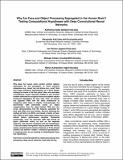Notice
This is not the latest version of this item. The latest version can be found at:https://dspace.mit.edu/handle/1721.1/137490.2
Why Are Face and Object Processing Segregated in the Human Brain? Testing Computational Hypotheses with Deep Convolutional Neural Networks
| dc.contributor.author | Dobs, Katharina | |
| dc.contributor.author | Kell, Alexander | |
| dc.contributor.author | Palmer, Ian | |
| dc.contributor.author | Cohen, Michael | |
| dc.contributor.author | Kanwisher, Nancy | |
| dc.date.accessioned | 2021-11-05T14:50:50Z | |
| dc.date.available | 2021-11-05T14:50:50Z | |
| dc.date.issued | 2019 | |
| dc.identifier.uri | https://hdl.handle.net/1721.1/137490 | |
| dc.language.iso | en | |
| dc.publisher | Cognitive Computational Neuroscience | en_US |
| dc.relation.isversionof | 10.32470/ccn.2019.1405-0 | en_US |
| dc.rights | Creative Commons Attribution 3.0 unported license | en_US |
| dc.rights.uri | https://creativecommons.org/licenses/by/3.0/ | en_US |
| dc.source | Cognitive Computational Neuroscience | en_US |
| dc.title | Why Are Face and Object Processing Segregated in the Human Brain? Testing Computational Hypotheses with Deep Convolutional Neural Networks | en_US |
| dc.type | Article | en_US |
| dc.identifier.citation | Dobs, Katharina, Kell, Alexander, Palmer, Ian, Cohen, Michael and Kanwisher, Nancy. 2019. "Why Are Face and Object Processing Segregated in the Human Brain? Testing Computational Hypotheses with Deep Convolutional Neural Networks." 2019 Conference on Cognitive Computational Neuroscience. | |
| dc.relation.journal | 2019 Conference on Cognitive Computational Neuroscience | en_US |
| dc.eprint.version | Final published version | en_US |
| dc.type.uri | http://purl.org/eprint/type/ConferencePaper | en_US |
| eprint.status | http://purl.org/eprint/status/NonPeerReviewed | en_US |
| dc.date.updated | 2021-03-25T12:15:39Z | |
| dspace.orderedauthors | Dobs, K; Kell, A; Palmer, I; Cohen, M; Kanwisher, N | en_US |
| dspace.date.submission | 2021-03-25T12:15:40Z | |
| mit.license | PUBLISHER_CC | |
| mit.metadata.status | Authority Work and Publication Information Needed | en_US |
